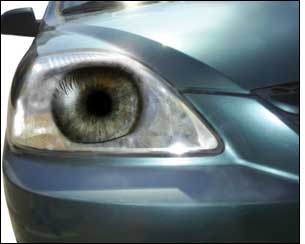Aug 01, 2009How often should maintenance checks be performed on assets? Where is the spare part needed for a repair? Who is the best mechanic available for the job? The answers to these questions could reduce the cost of maintaining assets and improve their performance. But all too often, companies don't have the information required to make smart decisions. At the Auto-ID Labs in Cambridge, England, we're developing RFID tools and solutions to automate asset- maintenance processes and improve the availability of information for maintenance decisions.
For effective maintenance, it's essential to know an asset's current configuration, as well as all configuration changes made throughout its life cycle. Current management systems are inefficient, because they depend on personnel to manually update asset records. RFID can automate these processes, ensuring the data is more accurate.
Take car maintenance, for example. As part of the European Union-funded PROMISE project, the lab developed an RFID solution that automatically establishes the configuration of a vehicle. Passive ultrahigh-frequency on-metal RFID tags are attached to key car components for unique identification. A "service pad," consisting of an RFID interrogator and four antennas, can capture the individual components' IDs. The service pad can detect any component replacements and trigger updates to the vehicle configuration database. The IDs can be linked to online databases—EPCIS repositories and Discovery Services—to provide maintenance personnel with the vehicle's complete service history.
We've also developed an RFID solution that links spare-parts management to maintenance scheduling. We demonstrated how this works using a washing machine as the asset. A condition-monitoring platform helps assess the condition of the washing machine, using real-time data from a number of embedded wireless sensors that monitor critical parameters such as vibration, temperature, humidity, current and tilt. Enhanced track-and-trace techniques, such as those we helped develop within the BRIDGE project, predict the availability of spare parts. Data from both the condition-monitoring and supply-chain platforms is fed to a decision support system (DSS), along with other information such as personnel availability and operational (washing) schedules. The DSS uses this information to decide the optimal time for maintenance.
We're also working on an industry-funded project to develop "self-serving assets" for the civil aerospace sector, using active RFID to automate and optimize service operations. The system would not only monitor the physical assets, it could also select the best parts suppliers.
In the future, companies will be able to employ intelligent assets that can autonomously monitor their status and make decisions to service themselves. An intelligent asset could, for example, decide that its service lifetime has reached an end and procure its own replacement.
Ajith Kumar Parlikad is an associate director of the Auto-ID Lab in Cambridge, England. Post-doctoral research associates Alexandra Brintrup, Tomas Sanchez Lopez and Zied Ouertani contributed to this column. Photo illustration: John Hull


